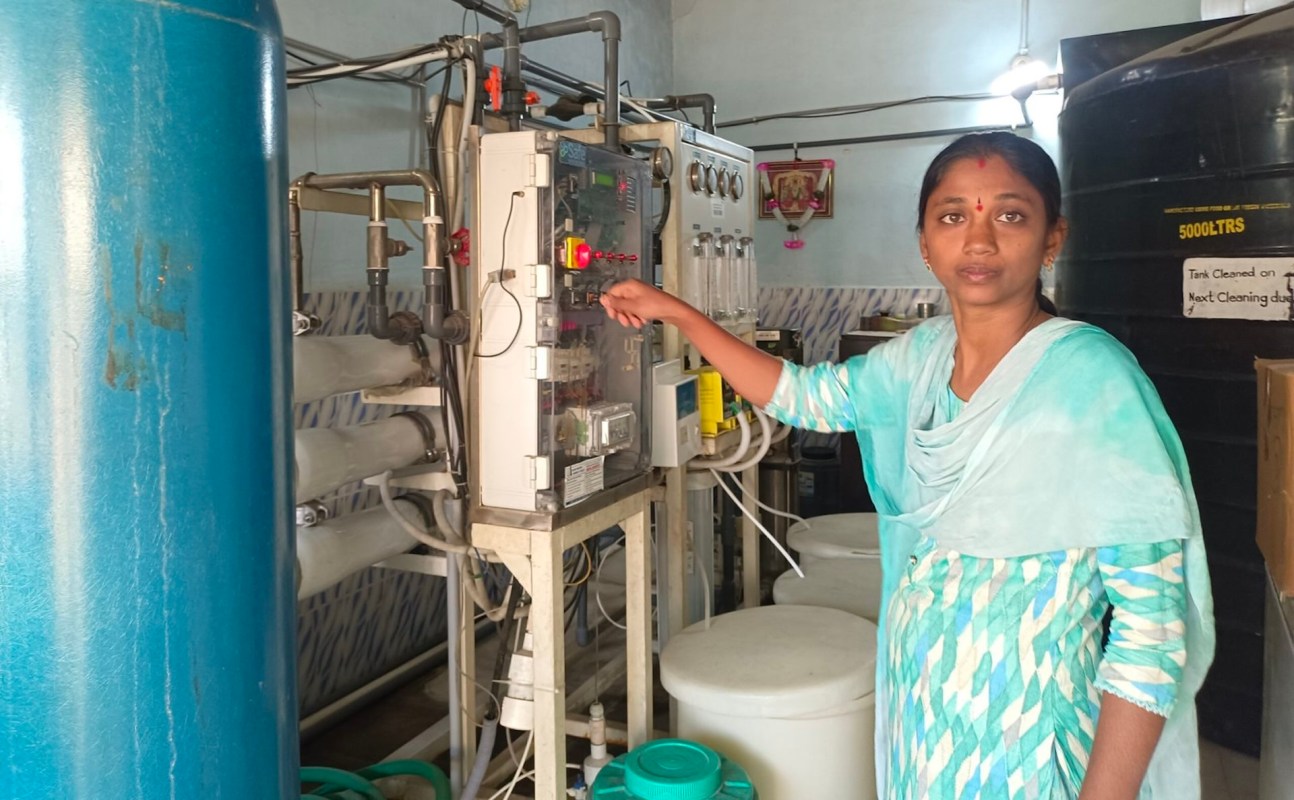When Somarathi Sindhuja invested in a "water ATM" near her home in south India, she never dreamed it would have such a positive impact on her and her community.
As the nonprofit online magazine Reasons to be Cheerful reported, Sindhuja's "public service business" provides clean drinking water for residents within two miles of her home in Warangal, Telangana, a drought-prone south Indian state.
When Sindhuja had the opportunity to become a "rural water entrepreneur" seven years ago, she put about $2,400 toward the business venture.
Per Reasons to be Cheerful, she's one of 350 such entrepreneurs trained and assisted by the American nonprofit Safe Water Network (SWN), which provides water ATM owners with all the necessary technical and marketing knowledge to run the business. The entrepreneurs just have to source the water and business space.
The ATM is inside an iJal (My Water) station, where customers can pay about $0.07 for 20 liters — or just over five gallons — of fresh, filtered water.
These water stations give communities access to safe, affordable drinking water that costs about half as much as they'd pay commercial tanker owners and around ten times less than bottled water. Plus, the business provides life-changing opportunities to women.
"I earn about Rs 15,000 to 20,000 (roughly $180 to $240 US) per month from this, which is amazing as there are hardly any jobs available to women like me here," Sindhuja told the magazine. "And I'm also improving the lives of people in my neighborhood."
Water ATMs are much-needed in Warangal, which is plagued by frequent droughts and unsafe drinking water. Poonam Sewak, SWN's vice president for programs and partnerships, told Reasons to be Cheerful that an estimated 63 million Indians lack access to clean drinking water.
However, the Indian government set a target to provide tap water to all rural households by the end of the year and has made significant progress. As of April 9, 75% of rural homes had tap connections. Still, Sewak said the water needs to be purified and treated before it's safe for consumption.
The online magazine detailed that SWN trains entrepreneurs to operate a reverse osmosis water filtration unit, which cleans water from wells or borewells. Sindhuja estimates that around 200 customers stop by daily, though some have been reluctant to buy water.
"Why should I spend on drinking water?" they would ask. To help ease their concerns, SWN began conducting public education to teach people about the importance of safe drinking water.
The outreach programs seem to be working, as many families have noticed improved health since drinking water from the ATMs.
According to a 2020 Safe Water Network impact assessment report, waterborne diseases decreased from 34% to 23% over three years for iJal station customers in Telangana. In addition, 63% of users reported having fewer medical expenses, and 73% had improved school attendance.
So far, SWN has provided 1.3 million people in India with safe drinking water and aims to expand its impact to 50 million people by 2026.
As Sindhuja's inspiring story shows, supporting eco-friendly initiatives and companies can transform lives and help create a healthier future for all.
"Reverse osmosis filters are expensive to run at home. My water ATM offers a cheaper and equally good alternative," Sindhuja told Reasons to be Cheerful. "Today, the iJal station supports me and my family, and together we support our entire neighborhood."
Join our free newsletter for cool news and actionable info that makes it easy to help yourself while helping the planet.









